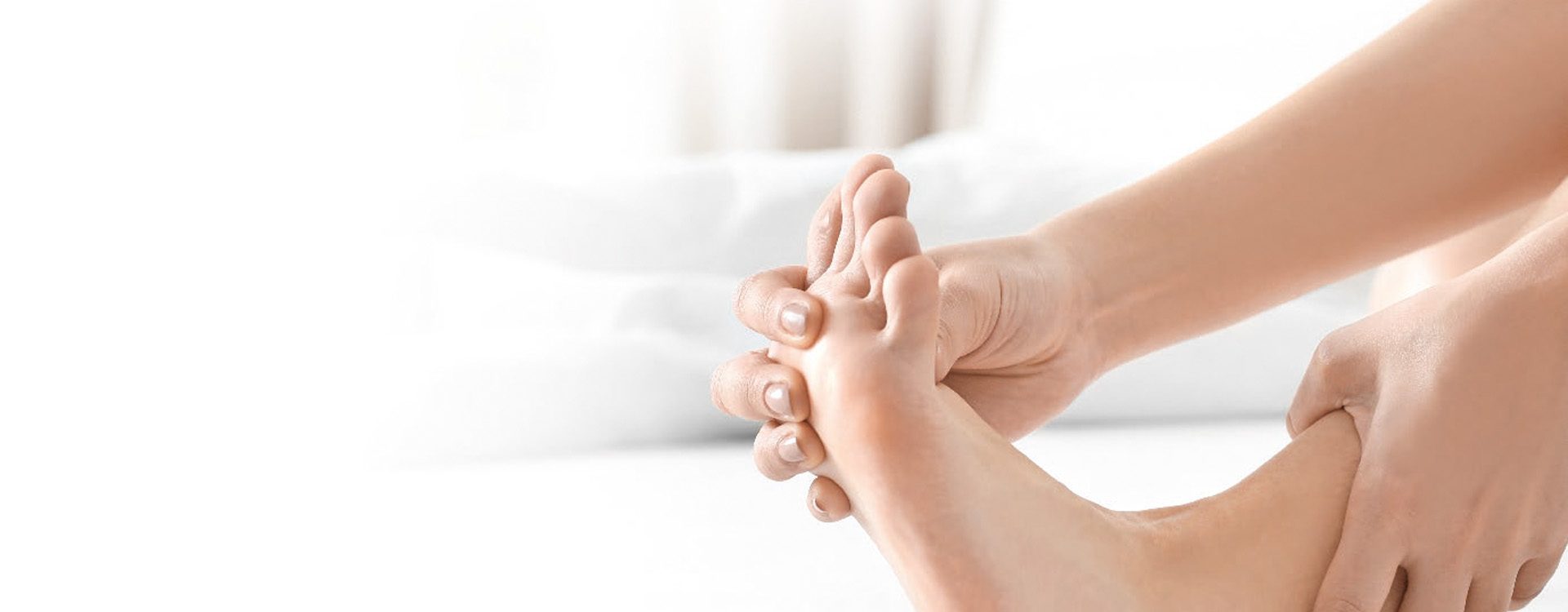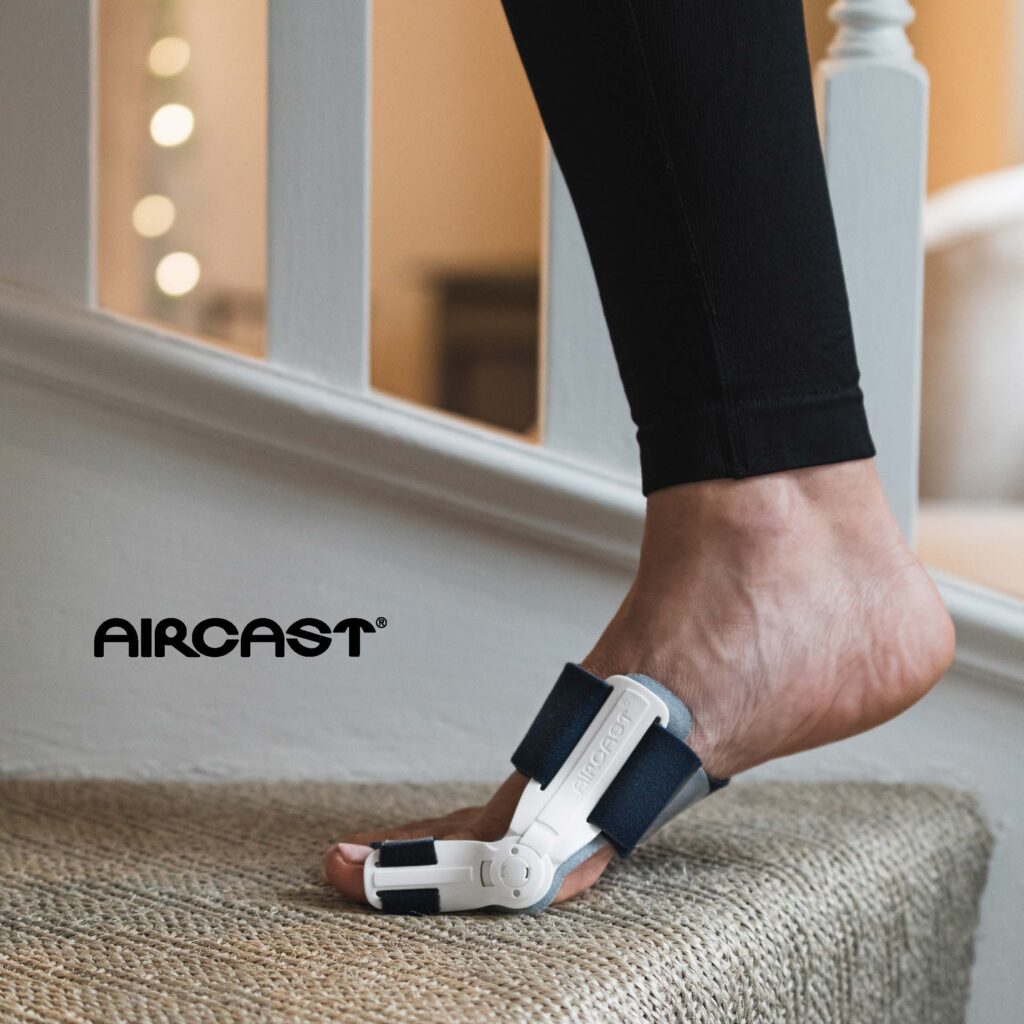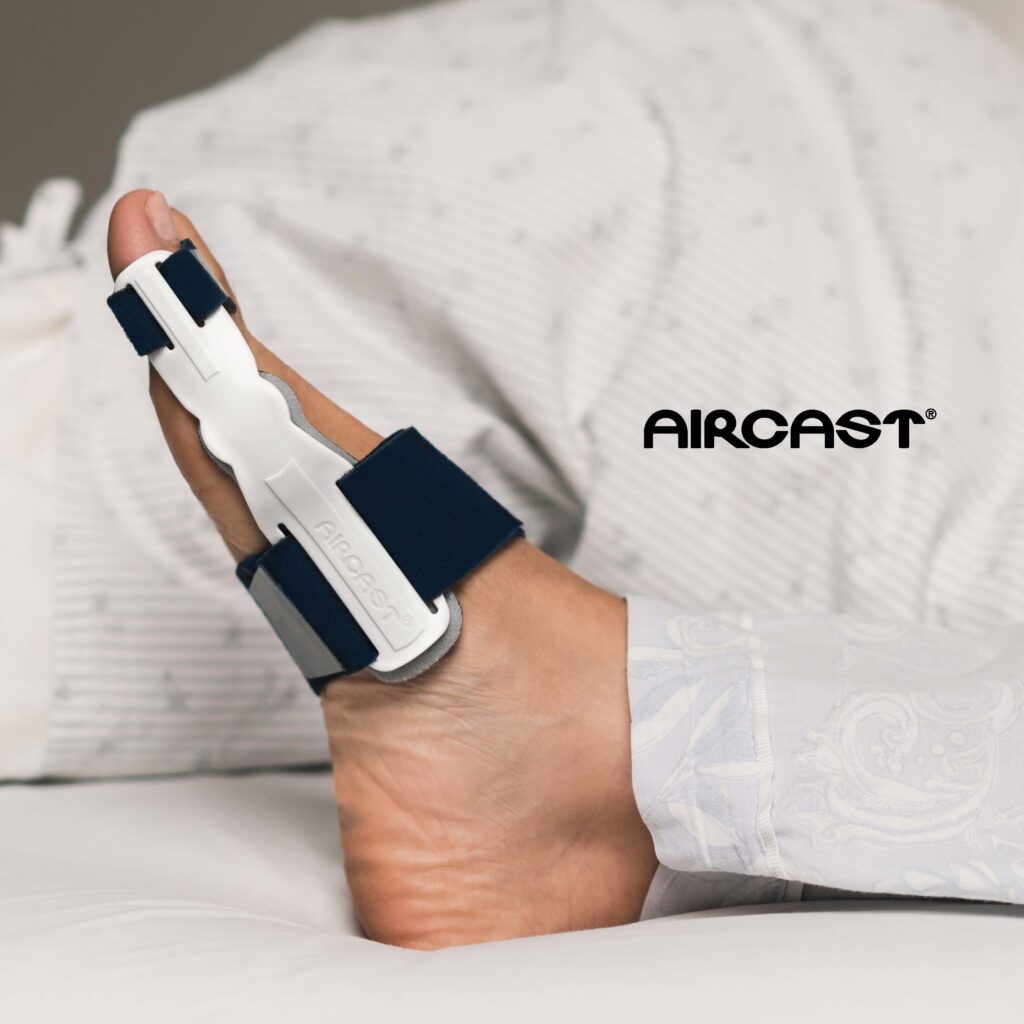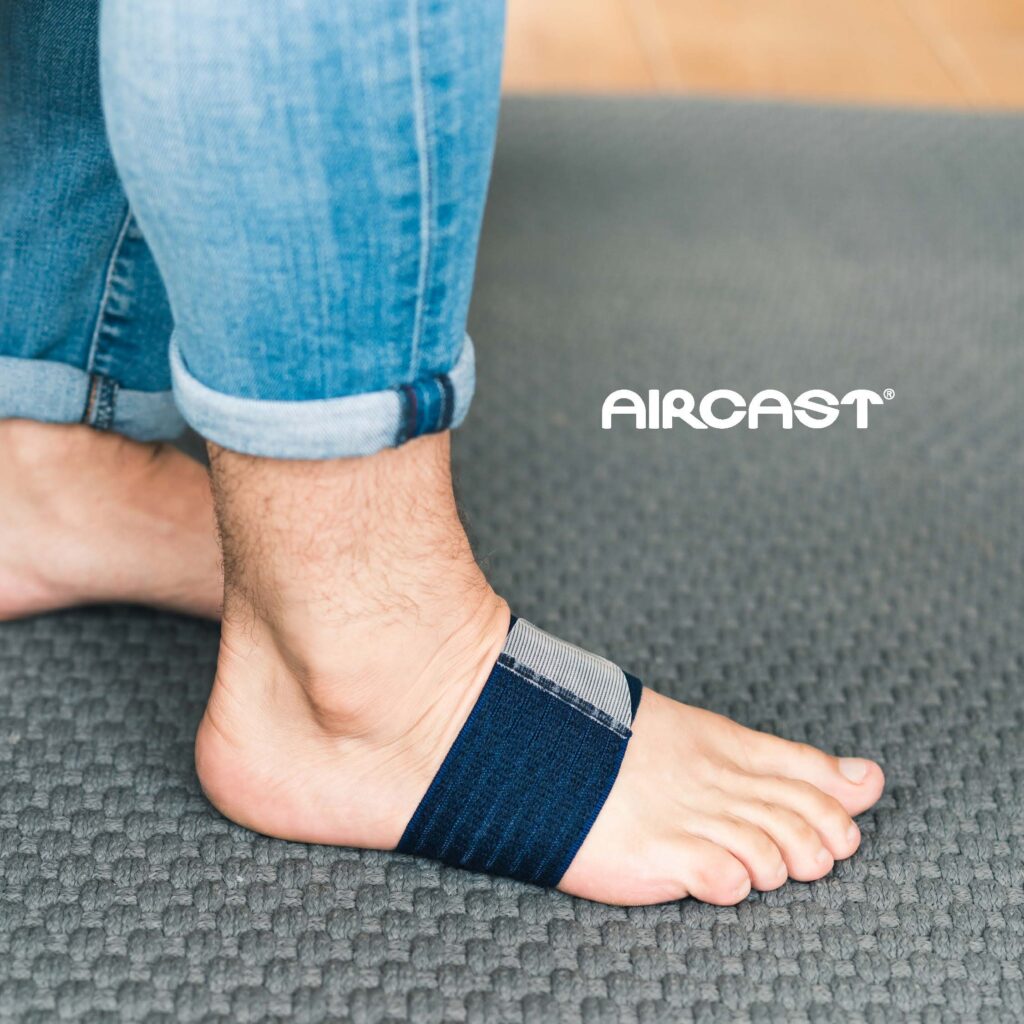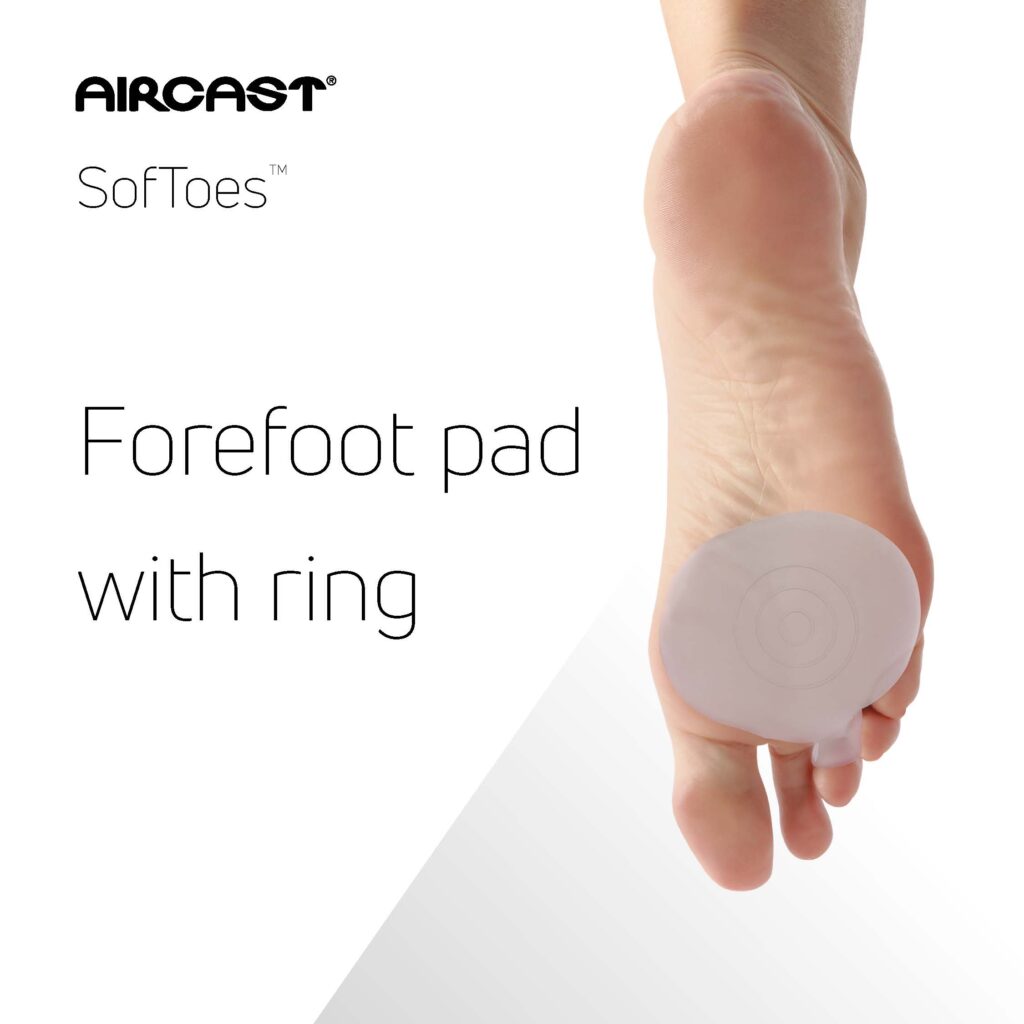Hallux Valgus – or bunion – is one of the most common foot deformities, especially for women, who are 15 times more likely to have corrective surgery for the condition than men. Because of its weaker connective tissue, the big toe can become misaligned, resulting in an unsightly and painful protrusion from the foot.
As well as being unattractive and making it harder to choose shoes, bunions also cause painful pressure points and inflammation. Without corrective action, they can lead to functional disability, foot pain, impaired gait patterns, poor balance and falls in older adults.
TREATMENT OPTIONS FOR BUNIONS
While only surgery can fully correct a bunion, a range of conservative treatment options has been shown to be effective in helping correct misalignment and provide pain relief, including after surgery1. These include hinged splints, rigid splints, foot braces, toe separators, and foot cushions.
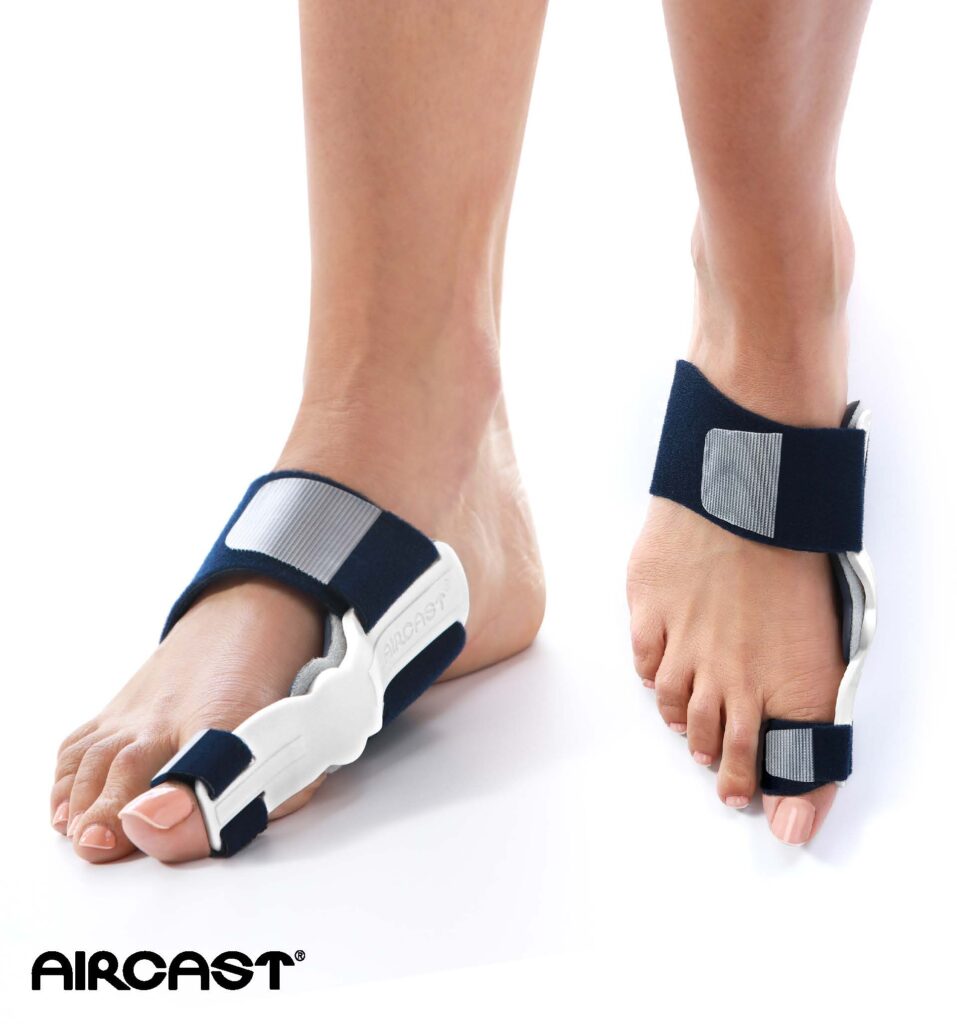
Rigid Bunion Splints
A rigid bunion splint, or night splint, is attached to the affected side of the foot to help provide immobilization and support. While night splints can help relieve pain² and correct malpositioning3, their rigid construction means they are only suitable to be worn during rest periods and at night.
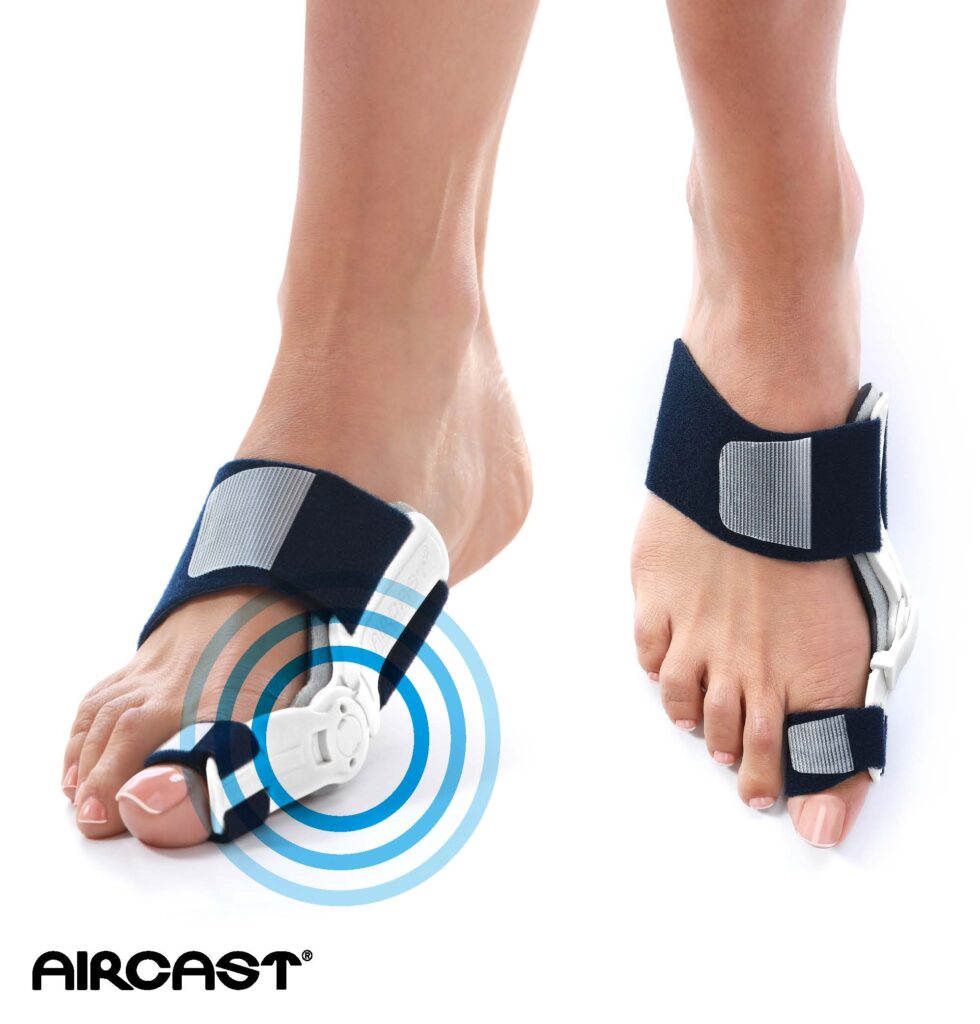
Hinged bunion splints
A hinged bunion splint works on the same principle as a rigid splint, but adds a hinged joint to allow the patient to move while wearing it. This makes hinged splints convenient for bunion patients looking for correction and pain relief while continuing their normal daily activities. 3
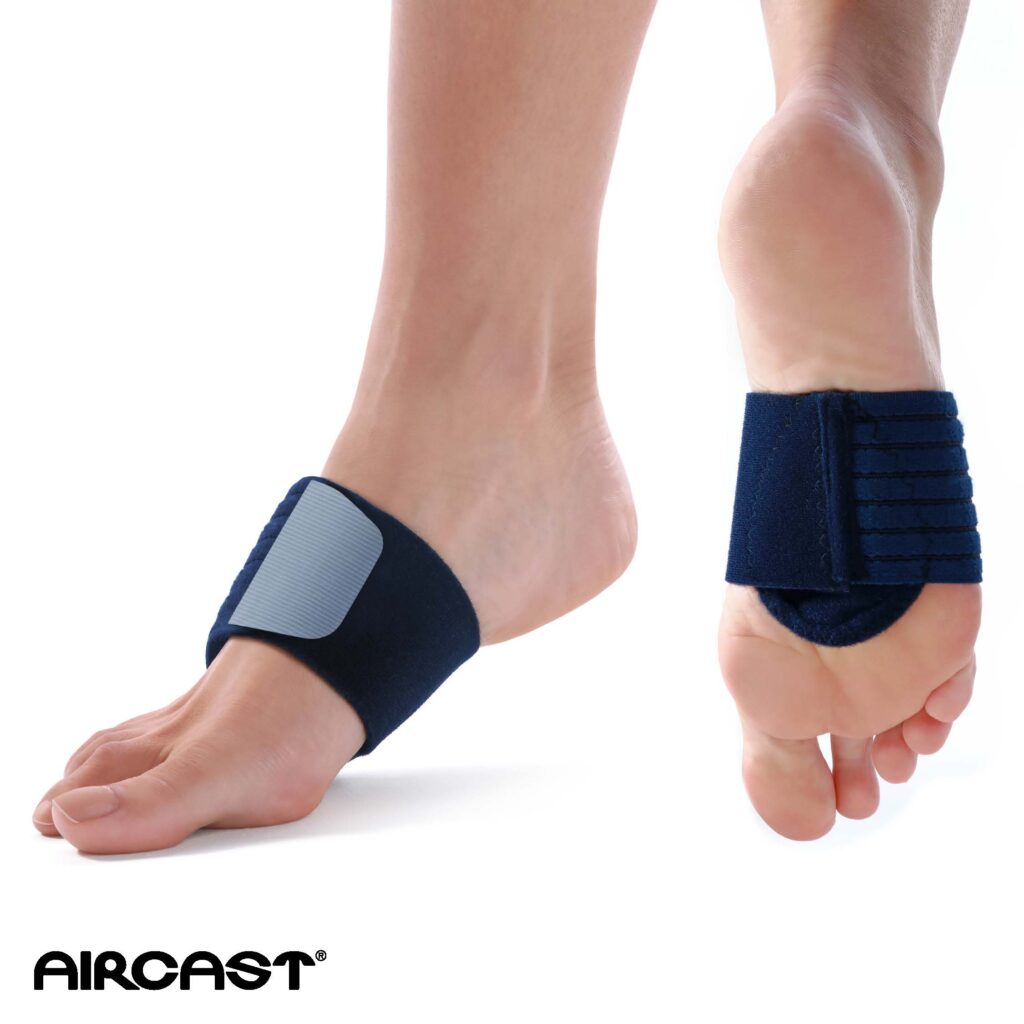
Soft braces
Soft braces aim to provide support and pain relief without the inclusion of rigid elements. They may take the form of an elasticated strap or even a supported sock, and offer a low profile to allow them to be comfortably worn with footwear.
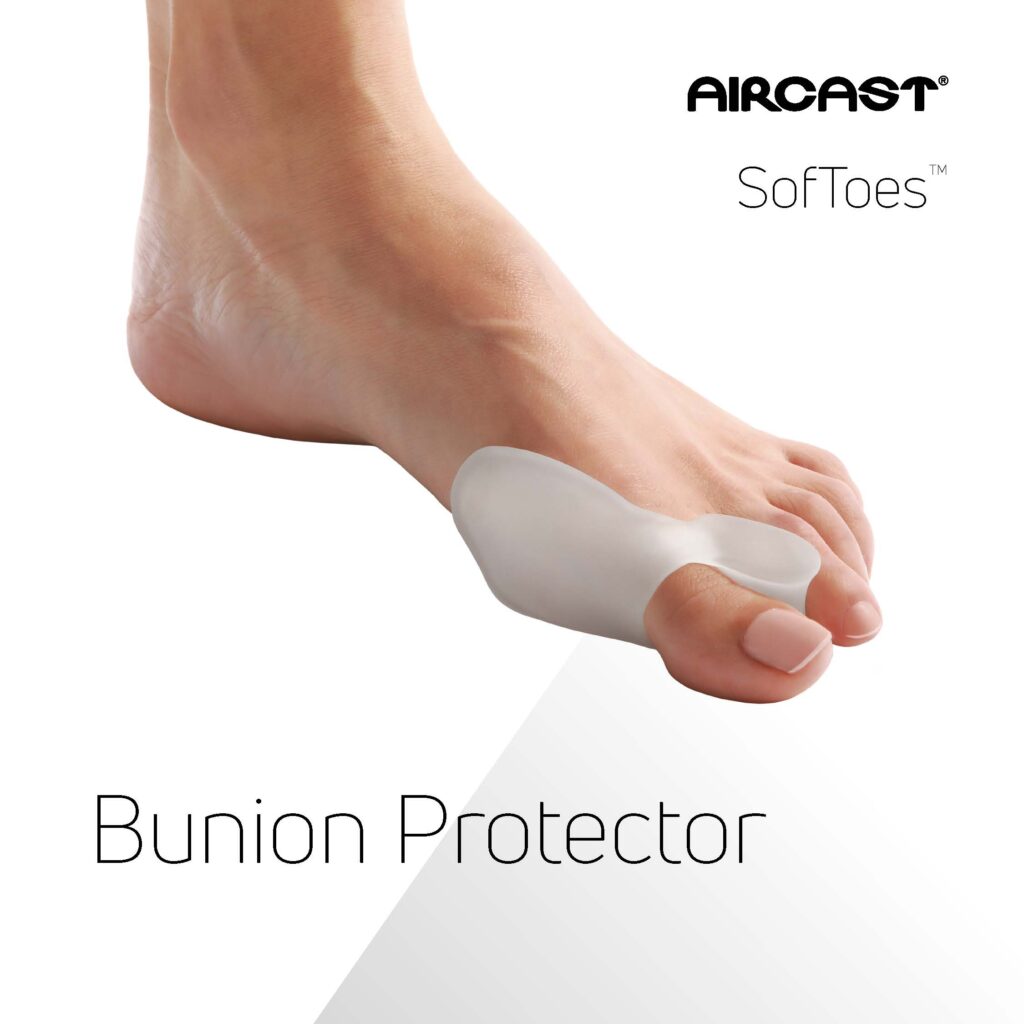
Foot cushions
Along with insoles that can be worn inside shoes, small toe and foot cushions are available to help provide comfort and soft protection for bunions and other toe and forefoot conditions. These products can include foot pads and toe spacers and are usually made of soft rubber-like materials.

INTRODUCING THE NEW RANGE OF BUNION SPLINTS AND FOOT CARE PRODUCTS
Medical device manufacturer Aircast® has provided patients with innovative healthcare solutions for over 30 years, and now it’s launching a comprehensive portfolio of hallux valgus and foot protection products. Designed to address bunions and other foot disorders, together they help provide patients with correction, protection and pain relief.
The range comprises of three splints and nine SofToes™ foot protection products:
ActyToe™
A low-profile, lockable hinged bunion splint, ActyToe™ can be worn with shoes for active use, as well as during rest and throughout the night. Whether you’re on the go or on the mend, the adjustable and versatile ActyToe hinged splint helps provide functional pain relief and correction for bunions.
ActyToe™ Night
A rigid bunion splint for use during rest and throughout the night. For patients with bunions, ActyToe™ Night combines rigid support with adjustability to help provide comfortable pain relief and correction during rest.
ActyToe™ Lift
A mid-foot bunion and splay foot brace with pad. Thanks to its low-profile design and comfortable arch pad, the ActyToe™ Lift mid-foot brace helps provide adjustable pain relief during activity and rest for a range of foot conditions.
SofToes™
The innovative Aircast® SofToes range helps provide solutions for a variety of needs in the toe area. These ergonomic cushions help provide gentle protection, soft comfort and secure support, while a subtle hint of menthol helps maintain a fresh, airy smell.
References
- Torkki M, Malmivaara A, Seitsalo S, Hoikka V, Laippala P, Paavolainen P. Hallux valgus: immediate operation versus 1 year of waiting with or without orthoses: a randomized controlled trial of 209 patients. Acta Orthop Scand. 2003 Apr;74(2):209-15.
- du Plessis M, Zipfel B, Brantingham JW, Parkin-Smith GF, Birdsey P, Globe G, Cassa TK. Manual and manipulative therapy compared to night splint for symptomatic hallux abducto valgus: an exploratory randomised clinical trial. Foot (Edinb). 2011 Jun;21(2):71-8.
- Moulodi N, Kamyab M, Farzadi M. A comparison of the hallux valgus angle, range of motion, and patient satisfaction after use of dynamic and static orthoses. Foot (Edinb). 2019 Dec;41:6-11.

